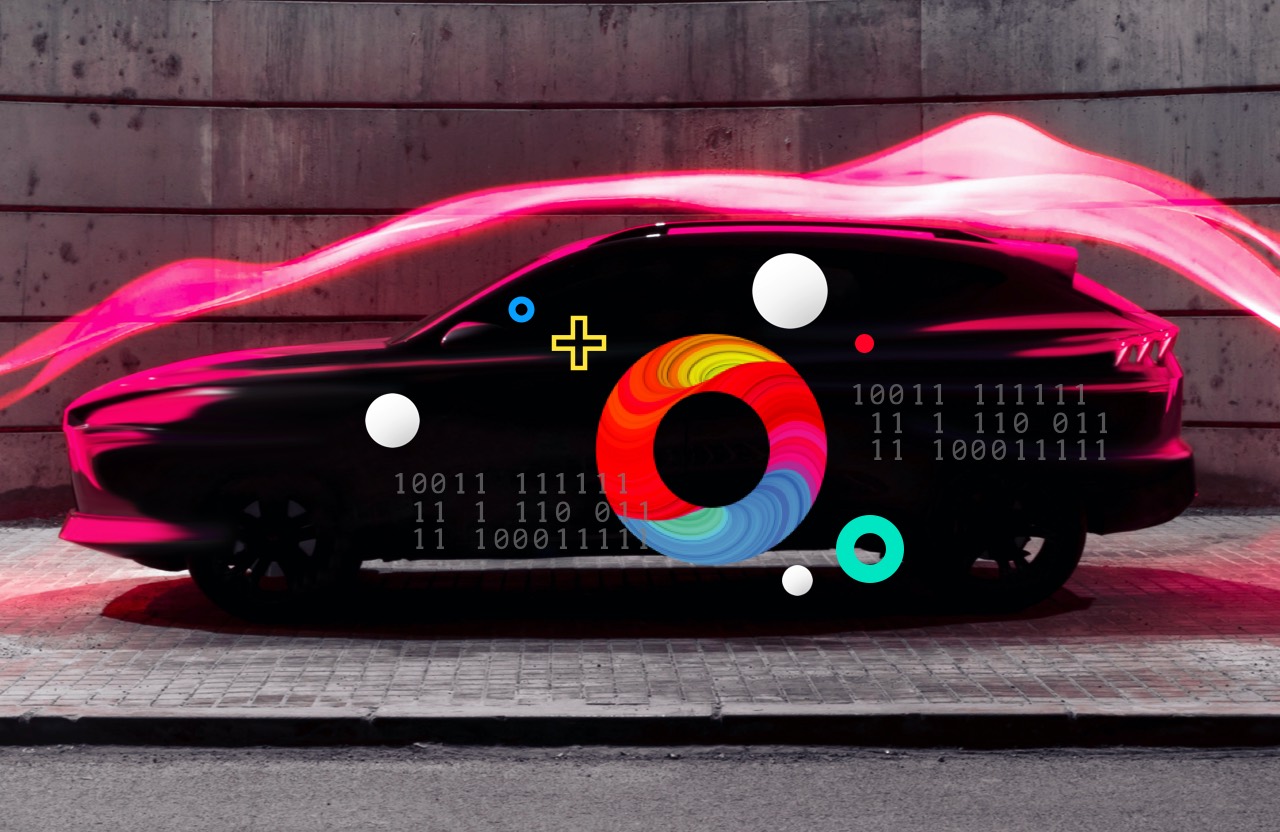What issue can we solve for you?
Type in your prompt above or try one of these suggestions
Suggested Prompt



Transportation & Mobility
The Top 5 Trends Shaping Transportation & Mobility in 2023
The race toward clean, connected mobility is shifting into high gear. In 2023, demand for electric vehicles (EVs) will be on the rise in North America and Europe, and new automakers will ramp up the delivery of cars and services to enthusiastic early adopters.
Driving the industry forward are the unrelenting forces of rapid innovation in technology and business, consumer demand for frictionless digital experiences, and ambitious net-zero emissions targets that loom large on the horizon. Nevertheless, established automakers are securing their position in the future of the industry through bold bets, strategic alliances and innovative new solutions.
What’s in store for 2023? Established automakers will focus on a number of key areas, including advances in connected car ecosystems, seamless shopping and purchasing experiences, sustainable business operations, and shared mobility services—all in the race toward a profitable, sustainable future.
Here’s a look at what’s ahead and how these trends will shape transportation and mobility in 2023 and beyond. Are you ready for what’s next?

Automakers are moving away from just selling cars. They’re transforming themselves into providers of digital and mobility services, turning the car into a connected platform to deliver those services anywhere and everywhere. These integrated ecosystems will give automakers an edge in the future marketplace, but we’re not there yet.
Today, original equipment manufacturers (OEMs) are continuing to find ways to monetize the connected car through pay-per-use and subscription-based service models. Exciting areas of growth include services around EV ownership, infotainment, in-vehicle commerce, and shared mobility services. A recent survey by Cox Automotive revealed that auto consumers are showing interest in paying for software subscriptions. They’re willing to pay for bundled services related to safety, vehicle performance, and creature comforts but expect many services to be included in the purchase price of a car. It will take time before OEMs can unlock new service models and additional revenue streams.
In 2023, automakers will need to direct much more of their focus to software and data. In order to develop a strategy around what digital and mobility services have to offer, companies need to understand what consumers want—whether it is an excellent customer experience, improved safety and convenience or cost savings. Agile ways of working, new tech capabilities, and data processes will all be crucial in the development and continuous optimization of these services. OEMs that can successfully integrate these software services into a one-stop ecosystem—and provide customers with an excellent experience—will benefit from customer loyalty and lifetime value.

OEMs are taking back the shopping experience. Digital products will be essential in the future, and OEMs must establish direct consumer relationships—and take control of the car-buying and ownership process—in order to deliver connected, personalized shopping experiences that consumers want. To remain competitive, OEMs will need to offer seamless, omnichannel experiences across retail solutions.
Today's auto-buying experience is ripe for disruption. Consumers want to start the purchasing process online, and Publicis Sapient's 2022 U.S. Automotive Market Study shows that consumers want digital tools that streamline the buying process—particularly in making paperwork easier, improving the availability of quality product information, and giving access to the best deals. Digital commerce is taking center stage, shifting the role of dealerships from being the main point of contact to one of many touchpoints in a sale. In the face of the global pandemic, car manufacturers discovered new ways to interact directly with consumers—for instance, expanding their made-to-order purchasing options—and this trend will only continue to accelerate in the future. The new role of dealers, whether it’s focused on product consultation or on delivery and aftersales, will need to be reinvented quickly as the industry shifts.
By 2023, automakers will need to define an omnichannel strategy for consumer interactions across the vehicle lifecycle—including purchasing vehicles, service contracts, parts and aftersales, and in-vehicle services. This means being able to implement a customer experience that extends relationships and services across tiers and channels. And they’ll need to reinvent the dealer model so it fits seamlessly into a modern retail environment. Automakers will be poised to take advantage of the next frontier in mobility when they have these customer interactions in place, allowing them to offer autonomous solutions.

By 2023, automakers will need to define an omnichannel strategy for consumer interactions across the vehicle lifecycle.

Today, consumers choose brands with the best customer experience. And automotive brands are no exception. As software becomes a revenue driver in the auto industry, automakers will need to transform their operations to be customer-centric and software-first. They'll need to adopt two key shifts.
The first is building an organization around a culture of speed, digital talent acquisition and direct access to customers. The second is developing the skills and capabilities—whether it’s through strategic partnerships or in-house talent—necessary to build and maintain the technologies that offer seamless digital experiences. In a recent announcement published in Automotive News, Ford CEO Jim Farley stated, “Building this future requires changing and reshaping virtually all aspects of the way we have operated for more than a century.”
In 2023, automakers will need to reshape their organizations in order to have the structure and skills to be truly customer-centric. To be customer-centric, automakers will need to have a 360-degree view of their customers, understand their customers from a personal and journey perspective, design customized services that offer real added value, and rapidly scale those experiences. Automakers will also need to modernize their tech stacks—from in-car operating systems to cloud infrastructure to customer journey platforms—to keep offering the best experiences.

Alternative powertrains are just the first step to sustainable mobility. To meet ambitious 2050 net-zero emissions targets set by regulators in the E.U., U.S., and Canada, automakers will need to address sustainability in their supply chains and business operations now and in the future.
According to TechCrunch, about 80% of an EV’s lifetime emissions come from battery production and the generation of electricity to power the car. To reduce this impact, automakers will have to monitor and trace every aspect of their supply chains, from materials sourcing to manufacturing to recycling—a monumental task that requires cross-industry cooperation. Manufacturers in other industries are tackling similar challenges in the effort to meet hundreds of sustainability KPIs, making this an area that's ripe for cross-industry learnings.
Automakers are exploring ways to increase the sustainability of their vehicles and supply chains through smart manufacturing. Exciting areas of innovation include lightweight, low-resistance materials that reduce energy consumption and advances in battery production to enable more energy to be stored in less material.
In 2023, OEMs will need clear sustainability strategies in place, as financial valuation and consumer sentiment are increasingly linked to sustainability practices. By implementing environmental, social and governance (ESG) reporting, OEMs can work back from a standard to determine what products to make, how to make them, and how to market them to consumers. Sustainability in supply chains and business operations will require a highly automated tech solution for transparency in deriving measures, monitoring progress and sharing data. Finally, automakers must implement intelligent manufacturing practices that reduce the carbon footprint of their vehicles.

Consumers want eco-friendly ways to get around. Younger generations, in particular, want technologically-enabled mobility options that are practical, affordable, and environmentally friendly. This is particularly relevant in urban areas across Europe, where individual, gas-powered car transport is highly discouraged or banned. As a result, there’s a demand for sustainable transportation that can be filled by new shared mobility services or technology that moves people in more intelligent ways.
Shared mobility services such as scooters, rental bikes, car sharing, taxi services, and public transit can also shift consumer behavior toward sustainable transport. The key to adoption is creating mobility services that meet consumer needs and fit seamlessly into their lives, whether that involves convenient door-to-door travel or frictionless access to public transport.
In 2023, OEMs, governments, and third parties that offer shared mobility solutions will need to focus on convenience, affordability and sustainability. Electrification and autonomous technology will create even more opportunities for innovative shared mobility services. Automakers and suppliers are expanding beyond their traditional businesses to create new models of convenient, ad-hoc mobility. And local governments are investing in infrastructure to accommodate new shared mobility segments, which will allow the new modes to thrive. Governments, businesses, and consumers will all need to contribute to this change if we want to see a sustainable future for shared mobility.
Looking Ahead to 2023

Advances in digital technology continue to drive the transportation and mobility industry forward, with no signs of slowing down. In 2023 and beyond, established automakers must manage new challenges in areas such as connected car ecosystems, seamless shopping and purchasing experiences, sustainable business operations, and shared mobility services. And they must operate as tech companies—prioritizing data and customer centricity—in order to stay competitive in the months and years ahead. Keeping up with the speed of the industry and the challenges posed by new entrants will require OEMs to move forward with bold bets, strategic alliances and innovative new solutions at every turn.
Related Reading
-
![]()
Article
From Automaker to Ecosystem Driver: 4 Stages To Orchestrate a Digital Mobility Ecosystem
To develop, deploy and evolve an ecosystem of digital and mobility offerings, there are four stages automakers must go through.
-
![]()
Article
How Automakers Can Transform into Tech Companies
With 5G hype at an all-time high, find out why today’s OEMs are functioning like data-driven mobility companies.
-
![]()
Article
How Connected Vehicles’ Data Will Help Car Owners
Find out how people-centric data strategy can generate customer value for automotive organizations.
-
![]()
Article
Gen Z Wants Options for Transportation – Future Trends
For Gen Z, the car is no longer the means of choice when it comes to getting from A to B, but rather one option among many. Automakers and mobility providers will need to adapt to the demands of these coming-of-age digital natives. Read more here.








